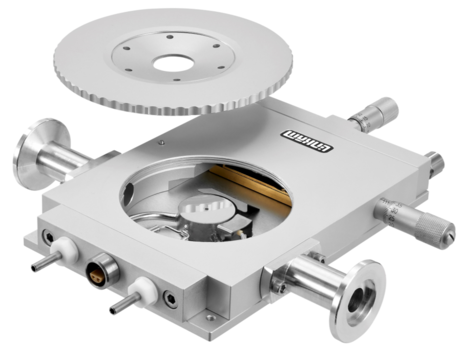The FDCS freeze-drying cryo stage and light microscopy methods, like polarized light and phase contrast, now make it possible to rapidly and precisely establish the collapse and eutectic temperature and intricately examine the freeze-dried structure of complex specimens.
Both stage temperature and pressure can be precisely regulated and programmed to replicate industrial processes and find out the perfect drying parameters.
Having a temperature range as low as <−195°C, ultra-low temperature eutectics can be analyzed with the help of the FDCS system.
Chamber pressure is tracked through a Pirani gauge directly mounted on the stage, which can maintain a seamlessly uniform vacuum even when the XY manipulators are utilized to track the drying front moving over the specimen.

Image Credit: Linkam Scientific Instruments
Further Reading and Resources
For additional information on how freeze-drying microscopy can help an organization, users can check the following online resources.
What is Freeze Drying?
A short video to simply explain the freeze-drying process and how a freeze-drying microscope can be used to optimize the drying cycle. Video Credit: Linkam Scientific Instruments
Freeze-drying.eu is a platform meant for individuals interested in queries relating to the freeze-drying of bio-products. A long-time user of the FDCS196 freeze-drying microscope, Dr Henning Gieseler can help users get the most out of the system.
Using the FDCS196 system, McCrone Microscopes and Accessories conducts freeze-drying training courses all through the year. The company’s website contains valuable support information.
Biopharma’s website has a wealth of data, describing the difficulties of designing the perfect lyoscycle. Biopharma provides training and brief workshops. Dr Kevin Ward has wide experience in utilizing freeze-drying microscopy.
SP Industries is an exceptional source of data on freeze-drying and has details of handy freeze-drying webinars, technical articles and opportunities for training on its website.